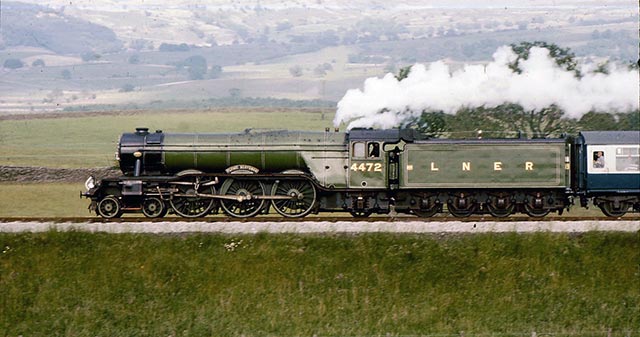Flying Scotsman – How A Steam Train Captured the Nation’s Imagination

Over the past couple of years, the rail industry has been in state of flux.
Firstly there was the promise of billions of pounds of investment in the infrastructure, the electrification of railways and the new HS2 development.
This promise then seemed to be in jeopardy as costs spiralled:
In particular it points to "staggering and unacceptable" cost increases in the project to electrify the Great Western Main Line from London to Cardiff, which is now expected to cost up to £1.2 billion more than the £1.6 billion estimated a year ago.
And the reaction of the public to all this news? Not much.
A lot of people have a lot to say about HS2, especially if it's going to go through their back garden, but as to the other plans, such as electrification, it's been up to pressure groups and politicians to get angry about it, no, none of this sparks the imagination, for that you need to go way back, back to steam...
The Arrival of the Flying Scotsman
Steam engines seem to have a magical place in people's memories. Although today's trains are efficient, quick, and mostly clean, many would rather sit in a slower, older and much noisier train.
And of course, the most iconic of these trains is the Flying Scotsman.
It was built in 1923 at Doncaster Works and handled the long-distance East Coast Main Line, travelling from London to Edinburgh, hence the name.
It also set two world records. It was the first steam locomotive to reach 100 miles per hour and then in 1989 while in Australia, it set the record for the longest non-stop run by steam, travelling 422 miles.
That last record was actually set while in retirement, because it stopped regular service in 1963 after clocking up over 2 million miles.
British Railways then wanted to scrap it, much to the horror of many groups, one of which tried, and failed, to raise £3,000 to buy it.
After a succession of owners, it finally ended up at the National Railway Museum, although it has been to Canada, Australia and America on various tours, pulling carriages full of fans and enthusiasts.
The Restoration
A ten year plan was put in place to restore the engine, and in January 2016, it was completed, much to the joy of steam train fans around the world. Suddenly everyone was interested, and steam was on the agenda again, so the fact a tour was going to follow really got people excited.
Stations around the UK will now play host to the restored locomotive and tickets are still available for some visits, however its popularity means they won't be around for long.
Will Rail Ever Be the Same?
Rail electrification is putting the rail network back on the agenda, however, we wonder whether it will ever be anything more than a way to get to work in the morning and home at night.
Times gone by, the train was the only form of transport for many, but cheaper cars mean it's only used for the commute, the weekend trip is usually by road.
However for some communities, it's a vital link, and for them, the promised rail upgrade is a must.